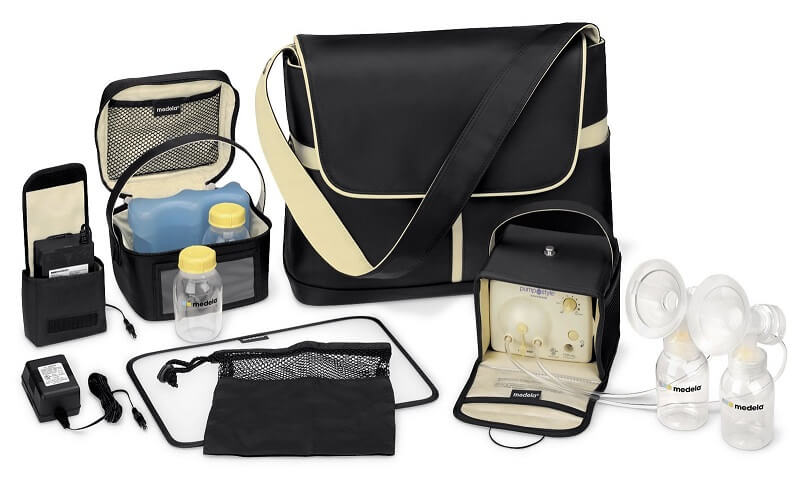Breast Pumps Available In The Market
There exists a variety of electric pumps in the market ranging from large hospital grade pumps, mid-weight personal use automatic pumps all varying in size to battery operated and manual models that operate by pumping each breast at a time. Also in existence are strap around pumps that are strapped around the waist which allows the pumping mom to work around instead of sitting waiting for the next pumping session. As a breastfeeding mom, it is appropriate to choose a pump that best suits your situations and is compatible with your day to day errands as pumping can be tiresome, the mother should not see it as a burden.
The pumps are designed to systematically follow the baby’s feeding cycle, naturally the infants sucking rhythm ranges in between 40 to 60 cycles in a minute and pumps like the hospital grade breast pump and the personal use automatic pumps operate at 30 to 50 cycles in a minute. The pump is designed to work in that the more the suction and releases it provides the better it gets at stimulating the milk supply. The breast milk naturally changes during the breastfeeding process with it being quite light and watery at the beginning, in the middle it gets heavier and fattier becoming whole milk and towards the end the milk gets creamier. The fat is healthful as it contributes to satiety among other benefits, ideally a mother will want a pump that mimics the baby’s feeding pattern. Efficiency of the machines is key if one is planning to have the milk stored, for instance, if the mother is going back to work she will require much milk at hand for feeding if she is not around.
After purchasing the right pump the mother should learn how to set it correctly if she is to get proper results. The pumps also need to be disassociated during the cleaning process, the mother should wash the pumps using a dish washer or the washing brush that comes with the pumps to wash the parts that came in contact with the breast, after washing it is important to drain them dry before use.
Recommendations
After birth the mother might consider the hospital grade pump if she is not sure how long she will be using the breastfeeding pump to feed the infant or if she knows she will only pump for a short period. If she otherwise considers pumping afterwards she might consider buying a top quality-mid-weight, personal use, automatic model at the best price she is comfortable with. The pump is efficient and will ensure the milk supply is on point, if on the other hand she will only need a breast pump occasionally the manual pump or a small electric pump that is battery operated is advised.
The pumps operations might prove tricky to some customers hence the manufacturers supply equivalent brochures that advice on the usage of the equipment’s, if the customers experienceany inconveniences while using the pumps they can contact the customer service lines for advice. After buying the pumps it is necessary to read the terms of service since most companies even offer warranties in case of damages.
Mothers might also resort to online research where information on breastfeeding pumps is plenty. Most sites offer a one on one mother to mother forum where the mothers can exchange ideas, ask questions on obstacles they experience, podcast on breastfeeding and parenthood topics, and even organize for personal meetings among the mothers living close to each other.
Chemical Precautions: BISPHENOLA and bottles.
Bisphenol A otherwise known as BPA is a chemical used to make plastic rigid it is howeverassociated with adverse health effects in children. As a precaution mothers are advised to check for “No BPA” labeling on the breast feeding bottles before purchase.
The plastic bottles made with no BPA are solid and rigid and safer unlike storage bags which might get contaminated with bacteria if it gets in contact with any sharp object like an ice cube.Whether you want a manual or electric breast pump or you want the hospital grade breast pump, it is important that you understand that you can get a free breast pump through insurance coverage.
Published by:












